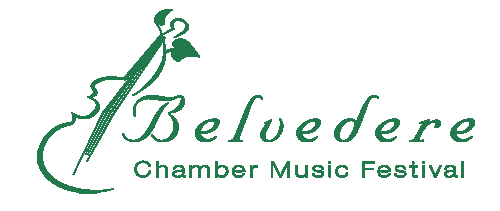
History - Performers - Videos - Composition Contest
| Concert 6 - June 20, 2020, 7:00 p.m. | Program Notes Festival Booklet (pdf) |
| Robert Muczynski: Duos for Flute and Clarinet, Op. 24 Kelly Herrmann, flute Jonathan Webber, clarinet The six short pieces included in this collection of duos are the epitome of Muczynski. The first movements features a melodic flute obligato over a slowly ascending clarinet line. The second movement is a jaunty mixed meter dance that alternates between 5/8, 2/8, and 6/8. The flute and clarinet trade expressive melodic lines in the third movement before joining together for one measure at the dynamic peak. The fourth movement explores the juxtaposition of unison passages with rhythmically complex simultaneous simple and compound subdivisions of the beat. The fifth movement is perhaps the most lyrical and expressive of the collection. The final movement is an accented, molto perpetuo stream of eighth notes that race to an exciting conclusion.--Dr. Amanda Cook |
|
| Sergei Prokofiev: Five Melodies for Violin and Piano Gregory Maytan, violin Maeve Brophy, piano I. Andante II. Lento, ma non troppo III. Animato, ma non allegro IV. Allegretto leggero e scherzando V. Andante non troppo Appearing originally as a work for voice and piano, Prokofiev’s Five Melodies Op. 35b were composed in Paris in 1925, during his self-imposed exile spent between the US and Europe. Prokofiev left Russia after the October Revolution of 1917, only to return again almost twenty years later, in the summer of 1936. The original version of these Melodies was composed during a tour of California in 1920. A few years later, Prokofiev arranged the works for violin and piano, and they were premiered by the composer himself and by the Polish violinist Paul Kochanski. Each Melody is dedicated to a violinist: the 1st, 3rd and 4th Melodies are dedicated to Kochanski, the 2nd to Cecilia Hansen and the 5th to Joseph Szigeti. The Five Melodies are little miniatures of intense lyricism and lively character. Their beauty derives from the juxtaposition of very different moods and characters: intense lyricism is contrasted with unusual, diatonic harmonies, with occasional moments of humour and Oriental flavour. The version for violin proved much more popular than the original: although very little was changed from the vocal score, Prokofiev’s musical ideas seem to come across more vividly with the aid of elements typical of violin writing: double stops, pizzicato and harmonics.--Stella Di Virgilio |
|
| André Caplet: Les Prières Esther Gray Lemus, soprano Adam Bowles, piano André Caplet was born in Le Havre, the youngest of seven children. He earned top marks at the Paris Conservatory and took the Prix de Rome in 1901. Les Prières is a cycle of wartime mélodies, comprised of three settings of sacred texts. Caplet set the Lord’s Prayer and the Ave Maria in 1914, in the shadow of the geopolitical tension which would lead to the July Crisis and to Caplet’s conscription. The third movement on the Apostle’s Creed was composed literally in the trenches of war in 1917 while the composer defended his country as a liaison agent, evading death by day and, according to a letter written by Debussy, dragging around a dismantled piano in order to write at night. At the premiere of the piece at a small church in Picardy later that year, in the words of an onlooking critic: "The blasting of the enemy had damaged the windows. The birds had made their nests in the eaves of the choir. They sang happily; meanwhile the tender chant, 'Je vous salue, Marie,' arose. Not far away, from the direction of Saint-Quentin, heavy artillery produced the bass. Caplet was visibly moved."--Josh Davidoff |
|
| Sergei Prokofiev: Flute Sonata in D, No. 2 I. Moderato Kelly Herrmann, flute Brian Ray, piano The Flute Sonata in D, Op. 94, was a musical work that was composed by Sergei Prokofiev in 1943. It was initially made for flute and piano, and was later transcribed for violin as Op. 94a. Both versions have been recorded several times. The Flute Sonata in D was completed in the summer of 1943. At that same time, Prokofiev was working on music for "Ivan the terrible". The flute sonata in D was first performed in Moscow, Russia on December 7, 1943 by Nicolai Kharkovsky (flute) and Sviatoslav Richter (piano). |
|
Robert Schumann: Liederkreis, Op. 39 selections |
|
Mark Volker: Prophecies, Grooves, and Meditations |
|
| Arvo Pärt: Fratres Barrie Cooper, violin Perry Mears, piano Fratres (“brethren”), written in 1977 by the Estonian composer Arvo Pärt (b. 1935), is one of the first compositions to explore the technique of tintinnabuli, which he developed during a period of profound personal, artistic, and spiritual crisis that began in the late 1960s. Musically, tintinnabuli evolved from a thorough-going study of plainchant and early polyphony, which he undertook in order to “learn to walk again as a composer.” Spiritually, it reflects his re- engagement with the mystical and contemplative rituals of the Russian Orthodox Church. Tintinnabuli shares with minimalism an emphasis on simplicity of idea and transparency of process. In the original version of Fratres, first performed by the Estonian early music ensemble Hortus musicus, no particular instrumentation was specified. The work now exists in numerous arrangements scored for a variety of ensembles with the musical substance remaining essentially unchanged. The exception to this is the arrangement for solo violin and piano, commissioned for the 1980 Salzburg Festival and performed there by Gidon and Elena (Bashkirova) Kremer. In this version, which Pärt dedicated to Kremer and Bashkirova, the original harmonic material, found mainly in the piano part, is intact, while the violin plays a series of virtuosic variations above it. The challenge for the violinist is to negotiate the virtuosic writing without disturbing the essential serenity of the work. --Brenda Dalen |